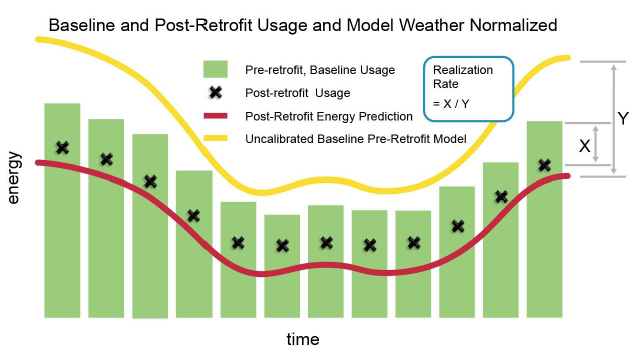This study, funded by the New York State Energy Research and Development Authority (NYSERDA) and performed by Performance Systems Development, identified the underlying causes for over-estimation of contractor-reported energy savings in the NYSERDA Home Performance with ENERGY STAR program for the years of 2007 to 2011 and assessed the potential impact on savings prediction accuracy of applying the ANSI/BPI-2400 standard for baseline energy model calibration to actual energy usage.
Download The Study:
NYSERDA Home Performance with ENERGY STAR Realization Rate Study
PSD’s Jerone Gagliano presenting these findings at the 2015 ACI conference:
Measuring Energy Performance & Improving Realization Rates
Date: Wednesday, May 6, 2015 – 10:45 am to 12:00 pm
Whole building energy efficiency programs across the country have experienced shortfalls in the ratio of actual energy savings relative to contractor-reported savings when undergoing formal evaluation of savings results. This ratio of actual to contractor-reported savings is called the “realization rate”. The ANSI/BPI-2400 standard was developed based on best practices to provide energy efficiency incentive programs with a tool for improving the confidence in energy savings predictions from energy modeling tools when used as part of incentive approval in efficiency programs. This study tested the potential of the ANSI/BPI-2400 standard to improve prediction accuracy by retrospectively applying the standard to a group of over 2,000 homes retrofitted in the NYSERDA Home Performance with ENERGY STAR program over five years. The study also evaluated a wide range of other factors that could be contributing to reductions in project-level energy savings realization rates.
The study found that:
- The most significant variable contributing to the relative accuracy of the savings predictions was the degree to which the baseline simulation model was calibrated to match the actual energy bills in the home.
- Programmatic application of the ANSI/BPI-2400 baseline energy model calibration standard will likely dramatically increase project-level realization rates (energy savings prediction accuracy).
- The medians of the contractor-reported percentage savings and the actual percentage savings were closely aligned, with the realization rate error being driven by a shortfall in the absolute value of the savings prediction resulting from the over-estimated baseline simulation models.
- The TREAT simulation software used by the program produced similar percentage savings estimates as compared with those from BEopt, a research-grade simulation tool from NREL and DOE’s Building America program.
- Other conclusions based on the findings in this study include:
- TREAT has been tested and accredited using the RESNET software verification tests for existing residential buildings. It is assumed that other energy simulation tools passing these RESNET software tests should produce similar results to the TREAT software when used in conjunction with the application of the ANSI/BPI-2400 standard. This could be validated through a future pilot study.
- The use of model calibration following the ANSI/BPI-2400 standard allows reduced detail in the energy models that undergo program review, reducing contractor effort and speeding up review time.
These conclusions and others in the study are being used to help improve program realization rates, streamline program operations, and automate incentive approval.



